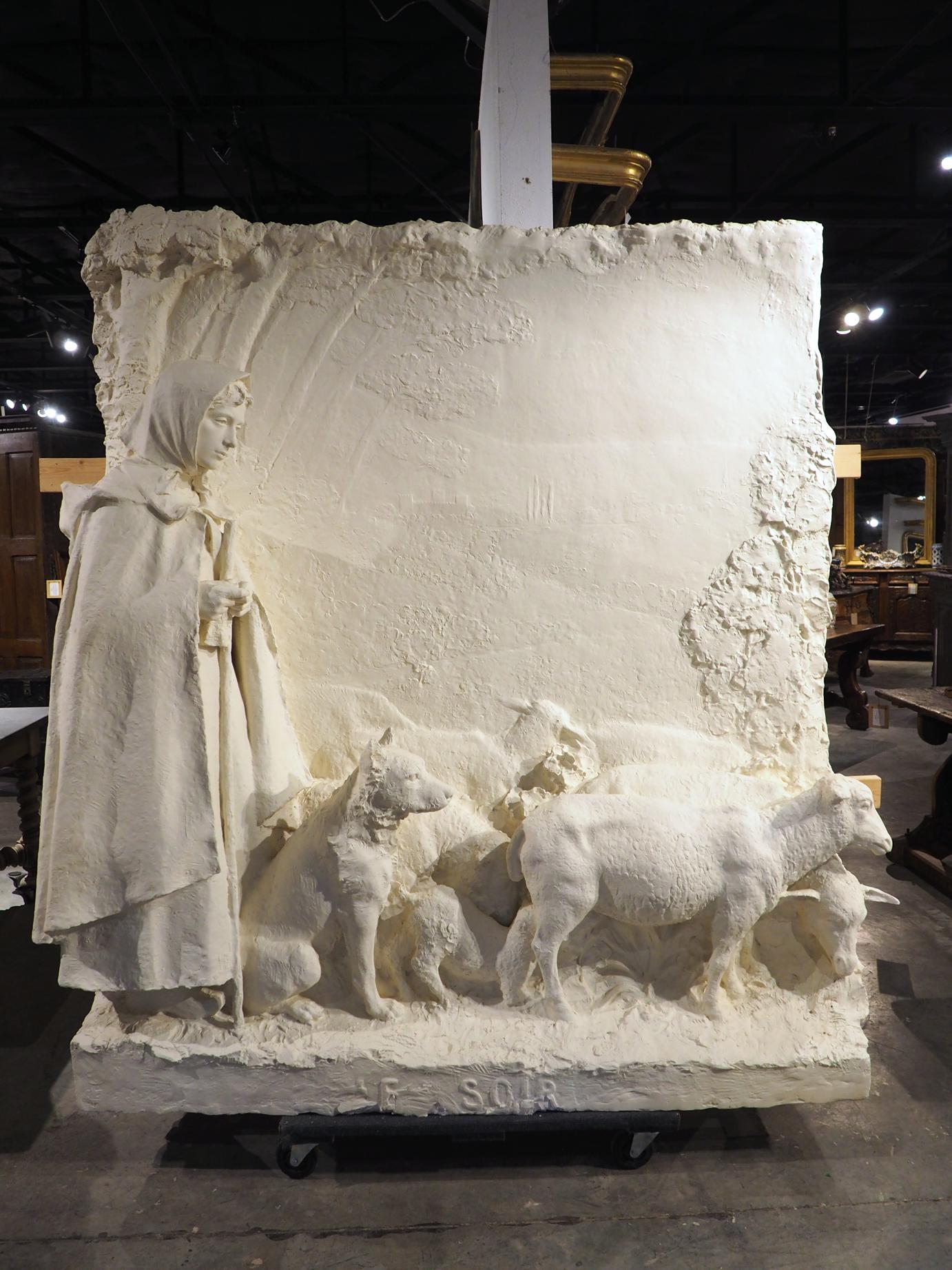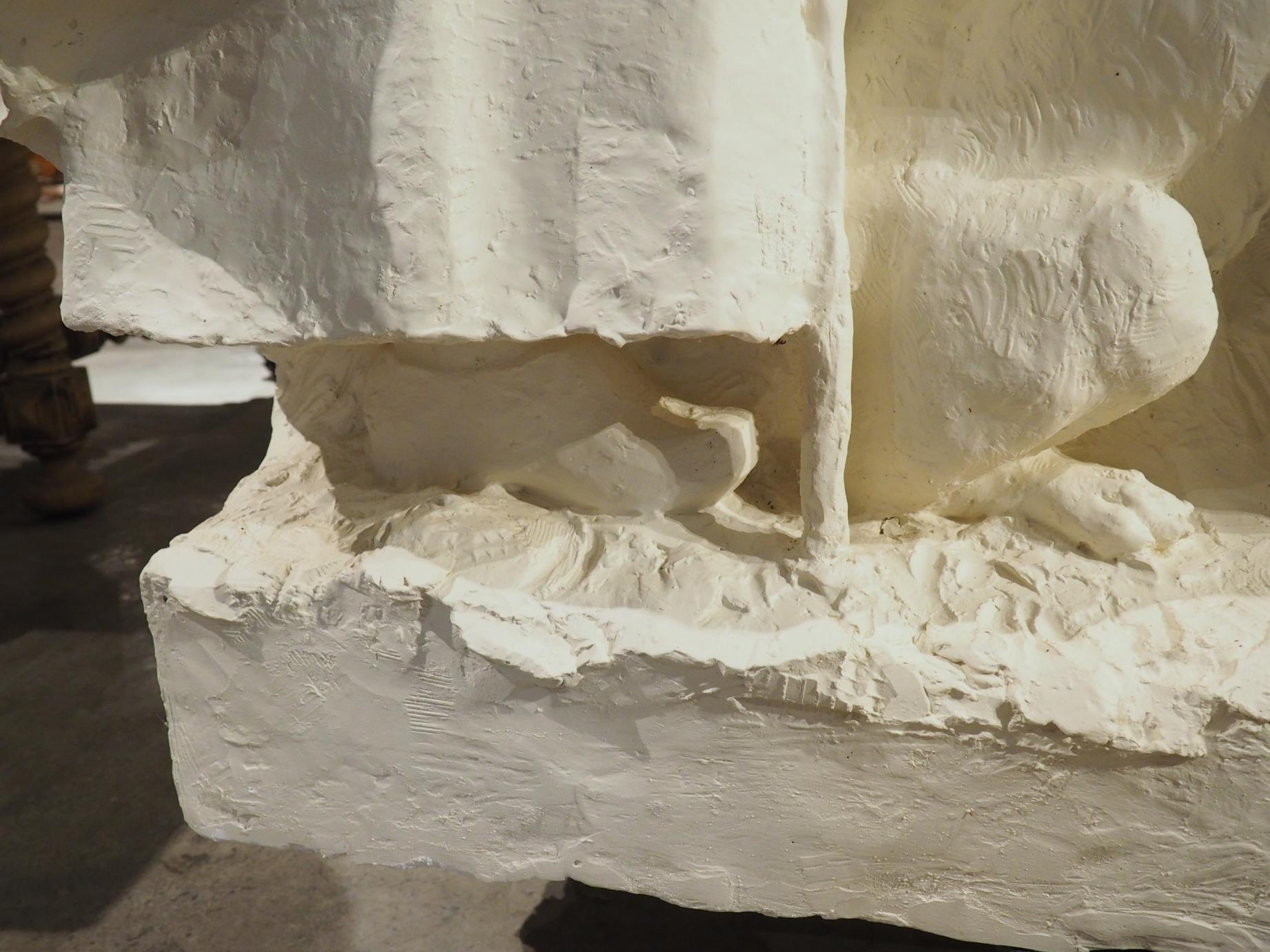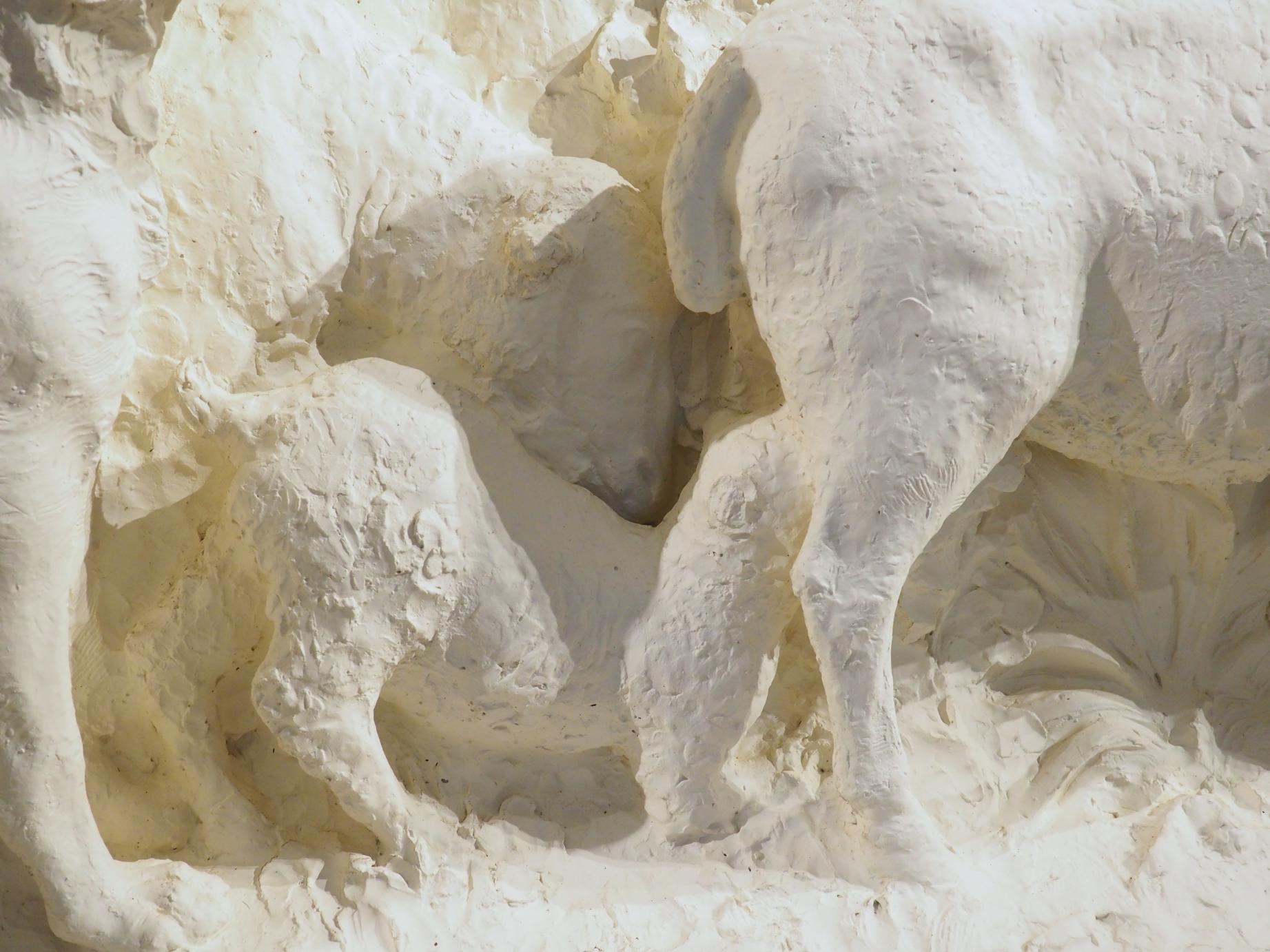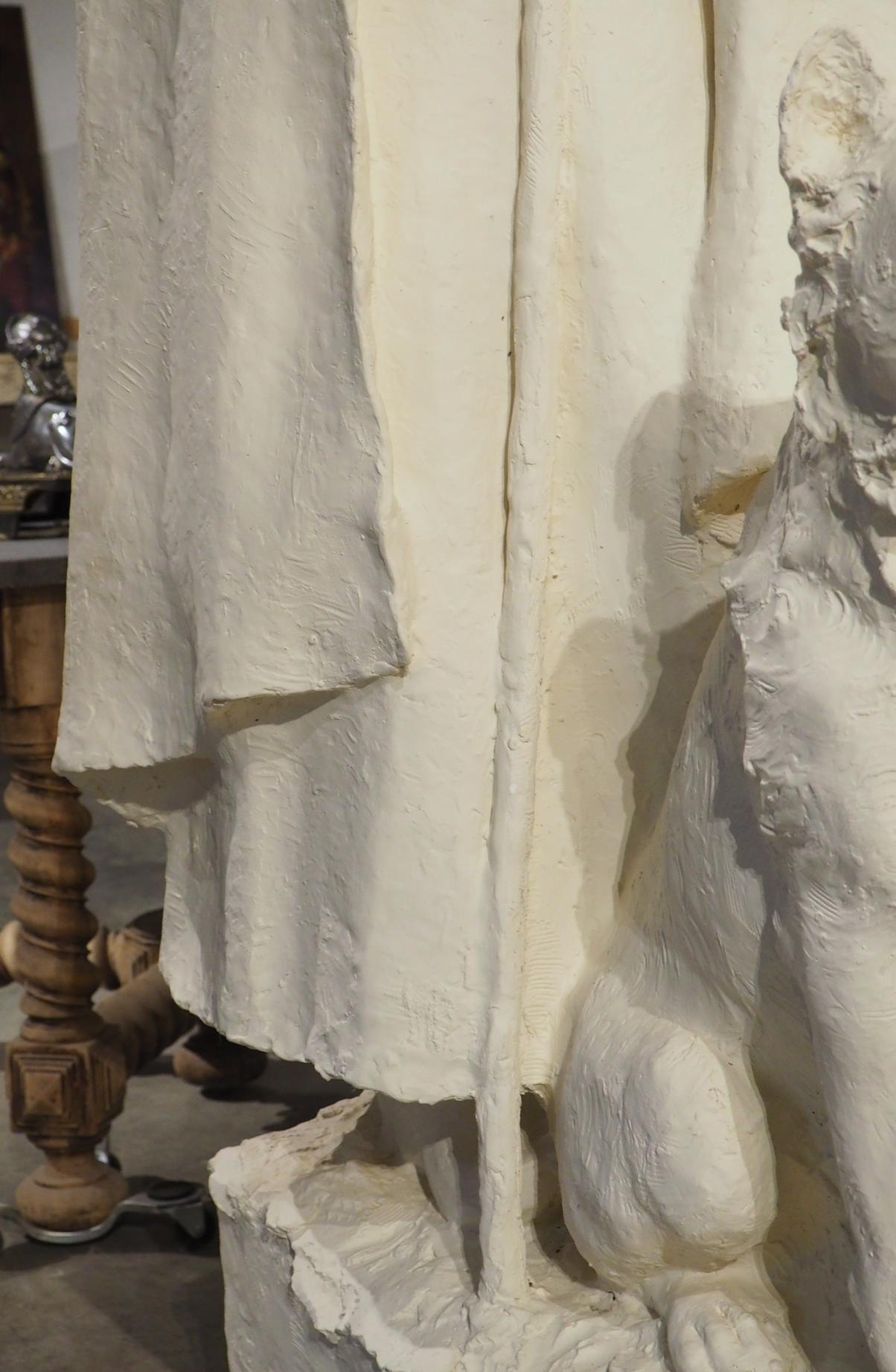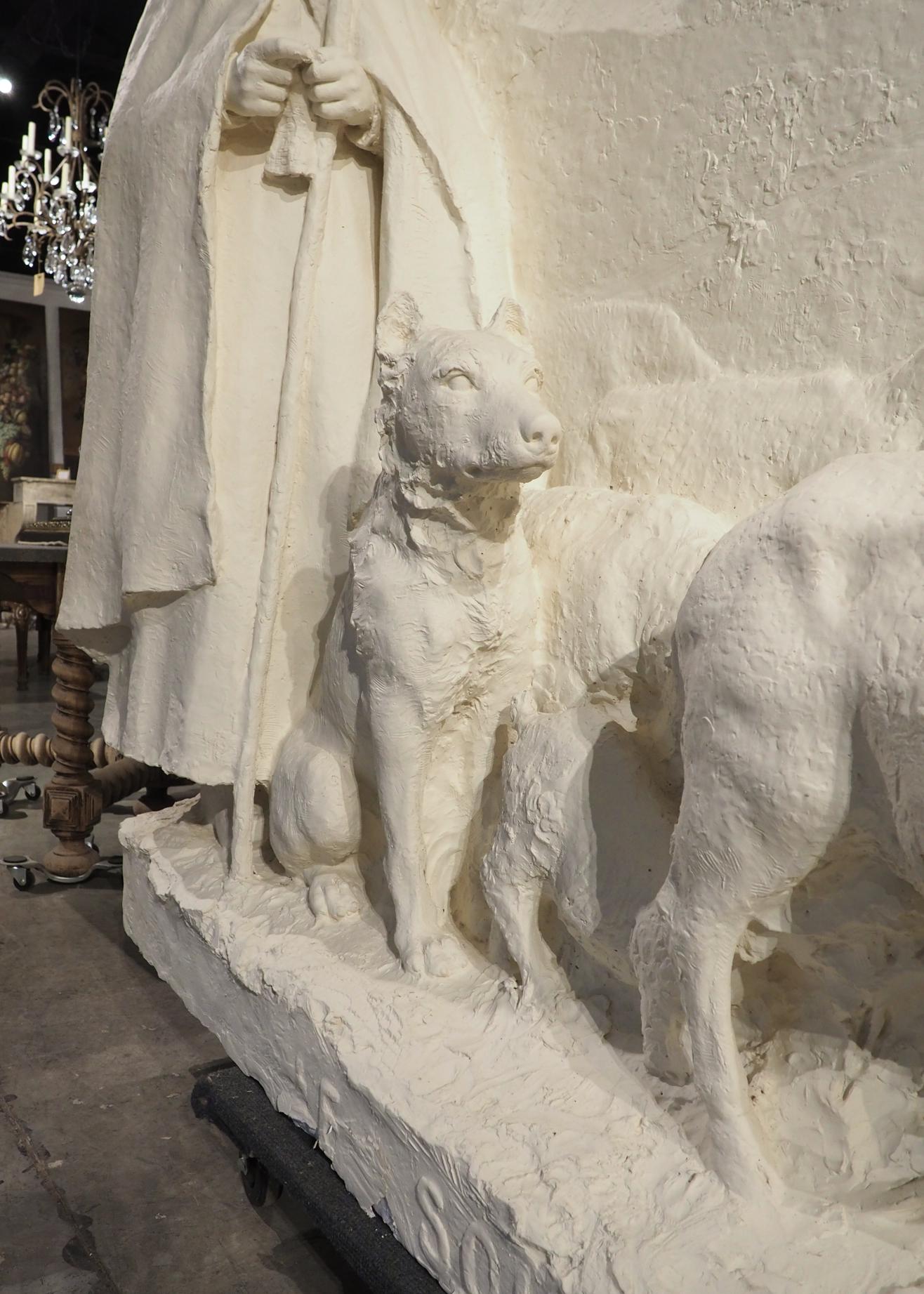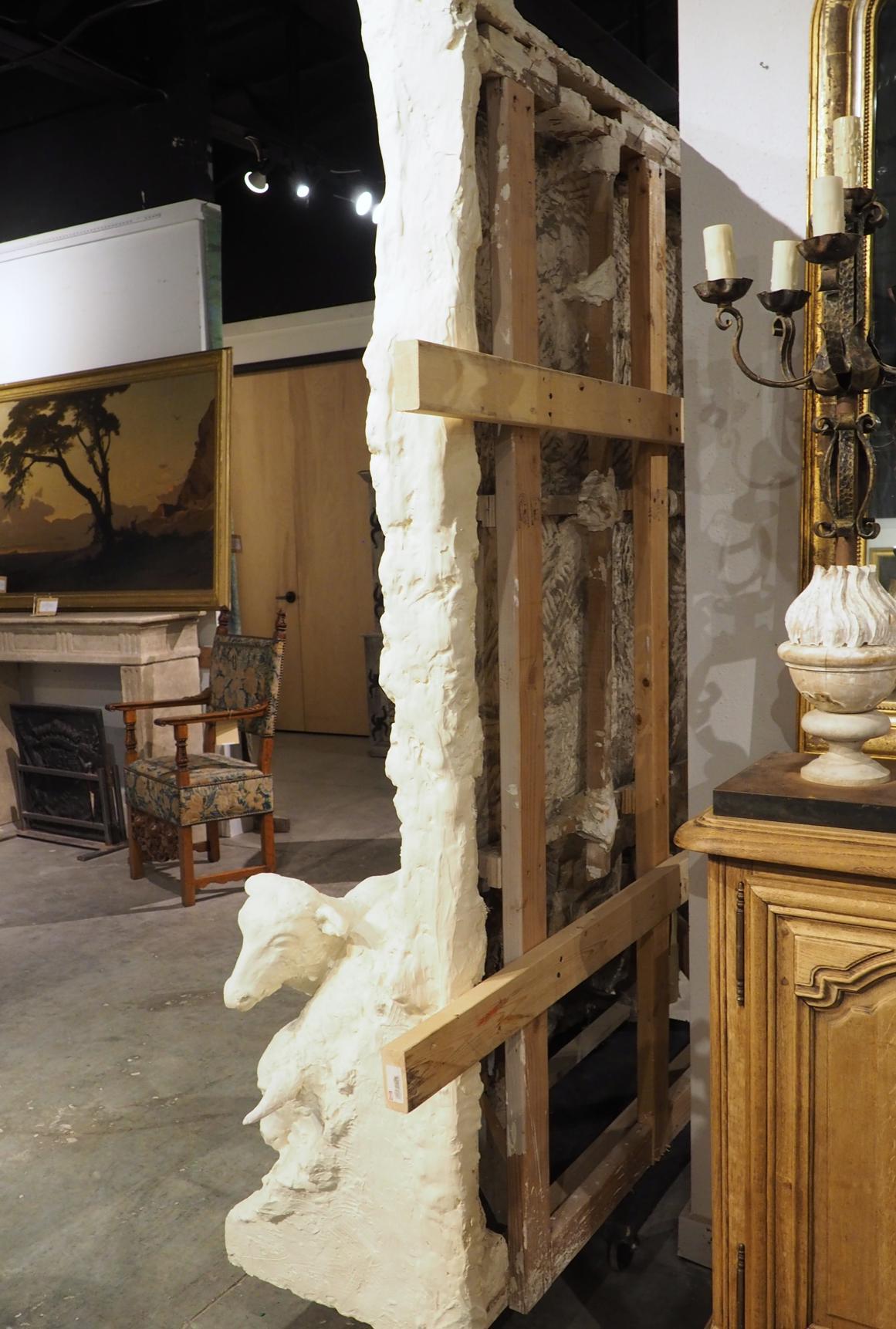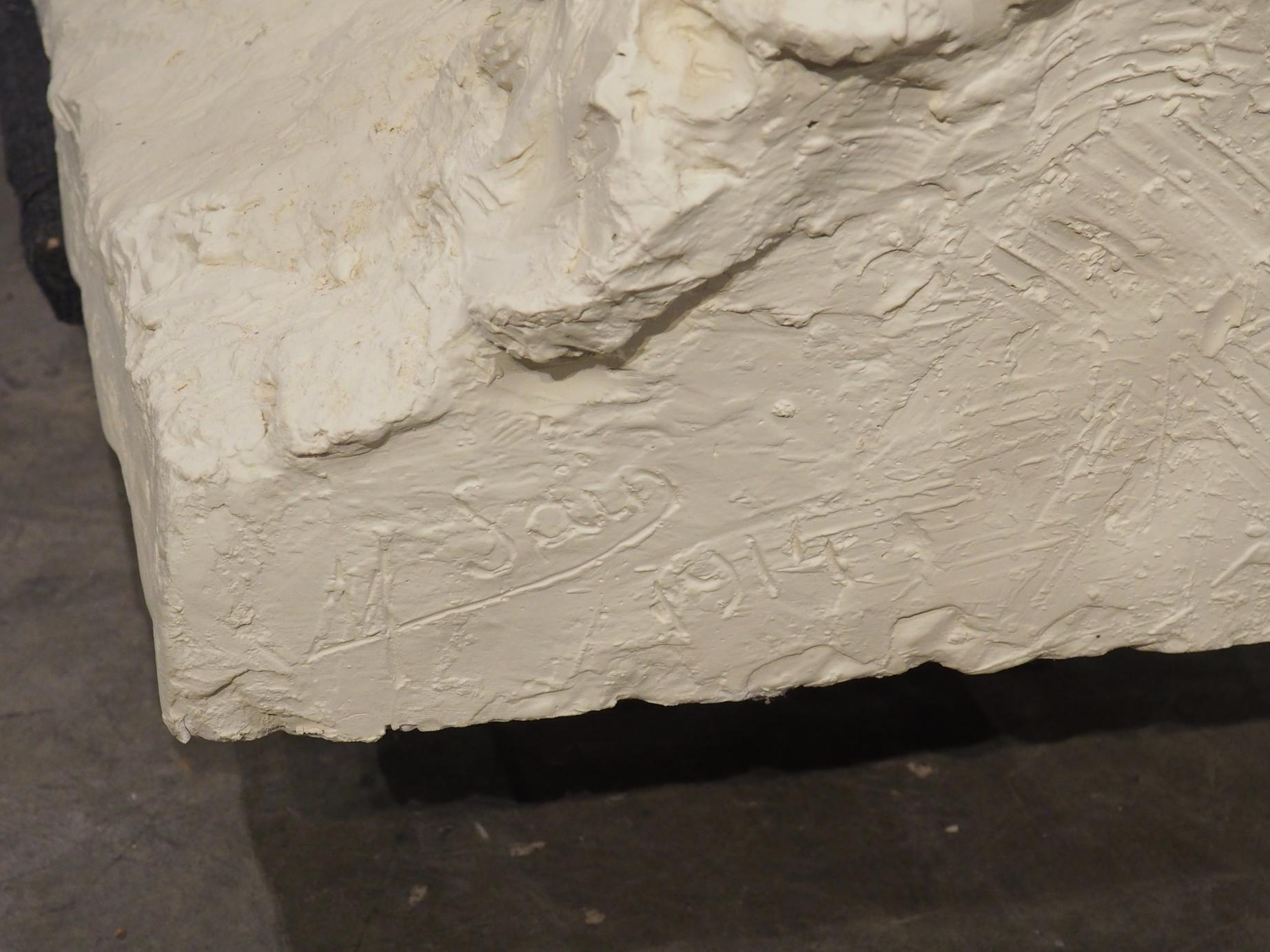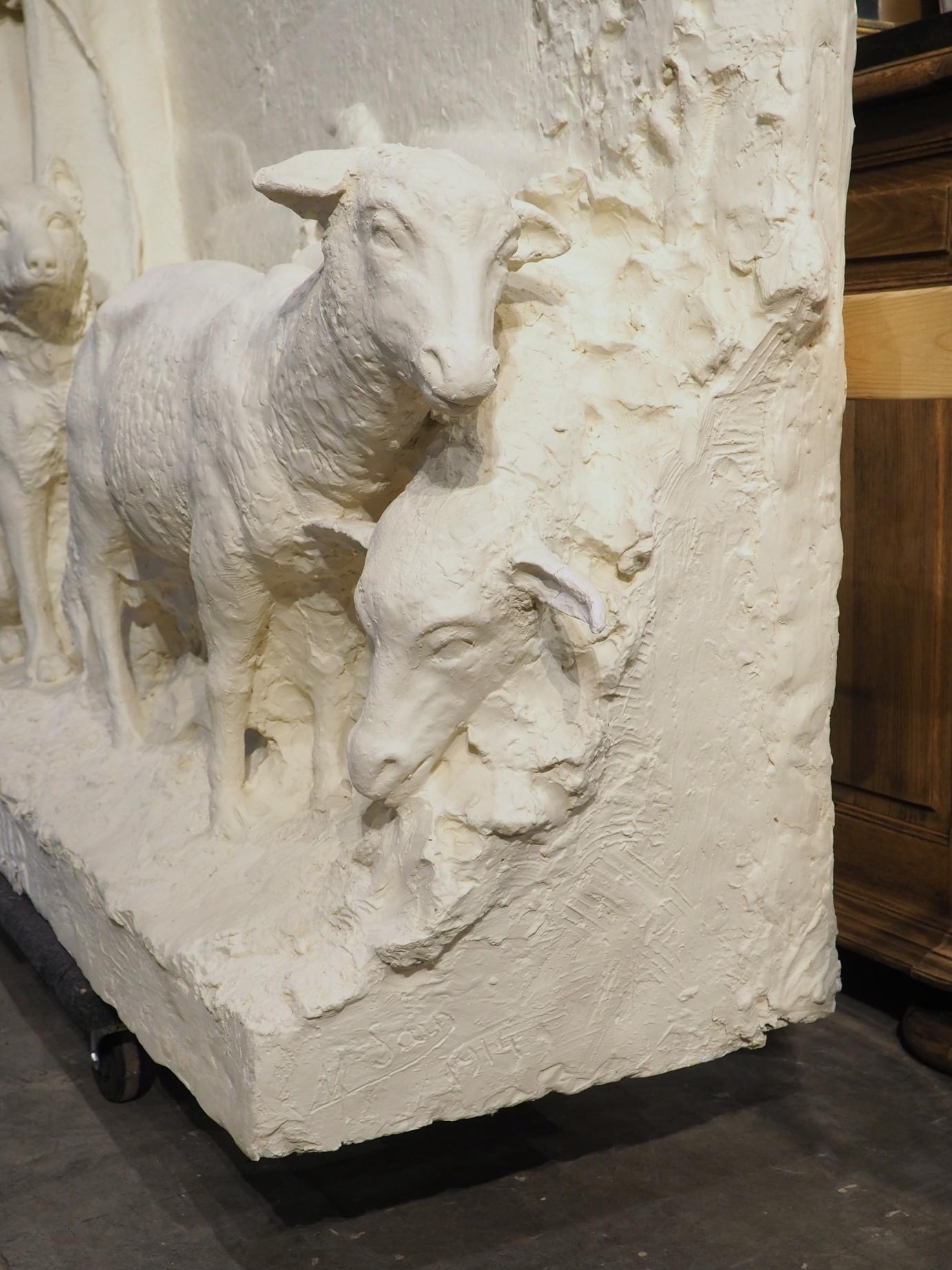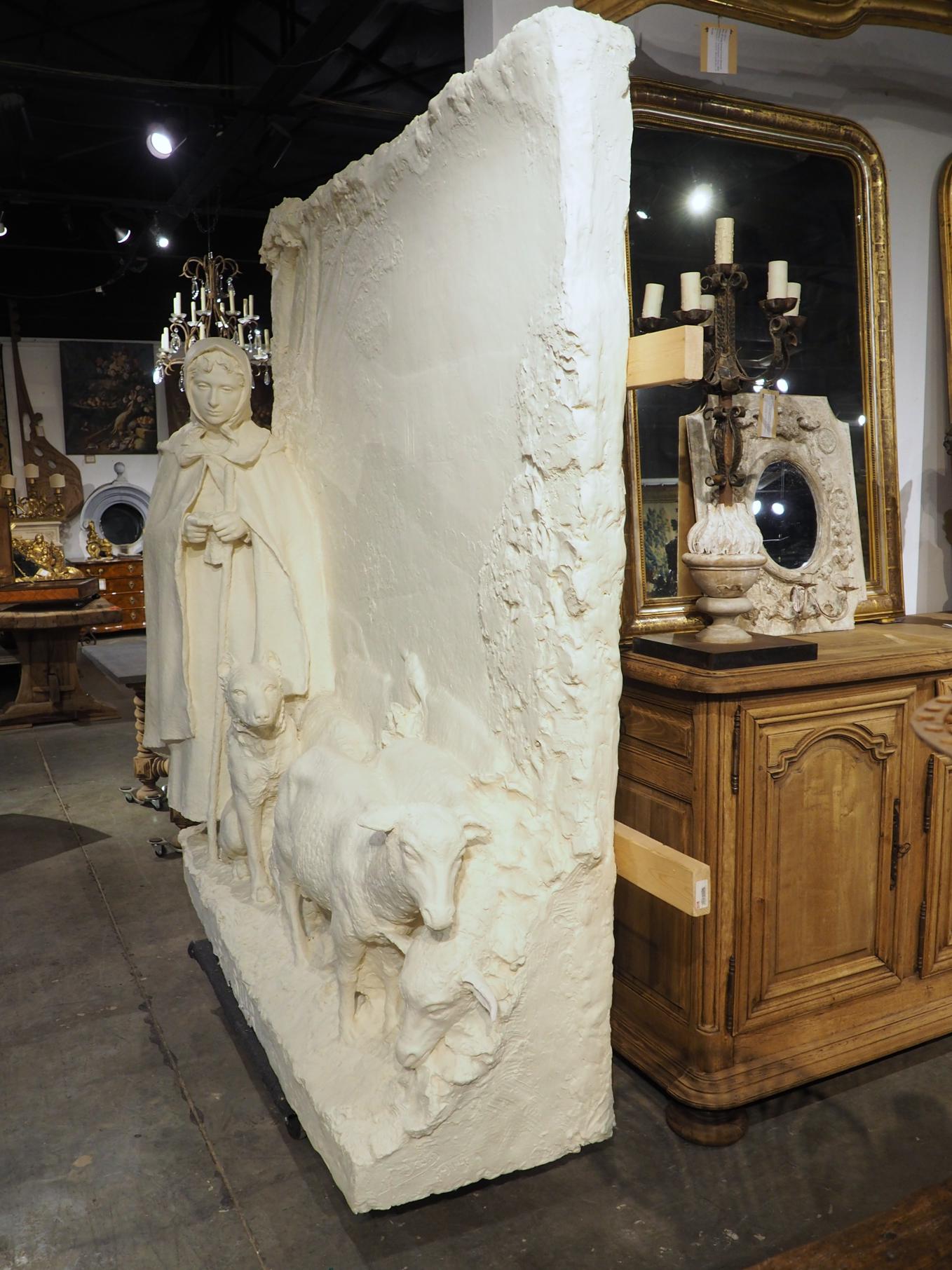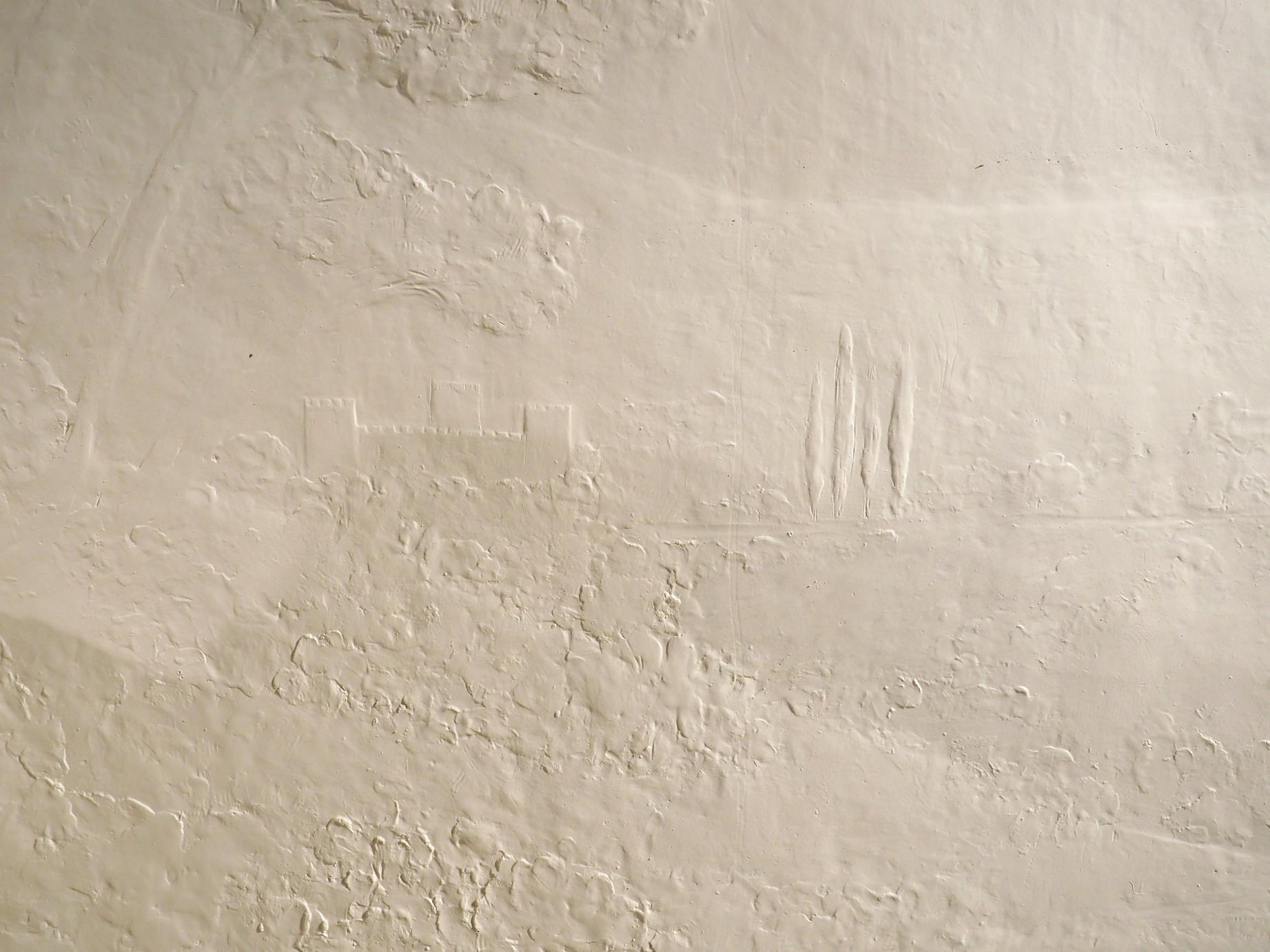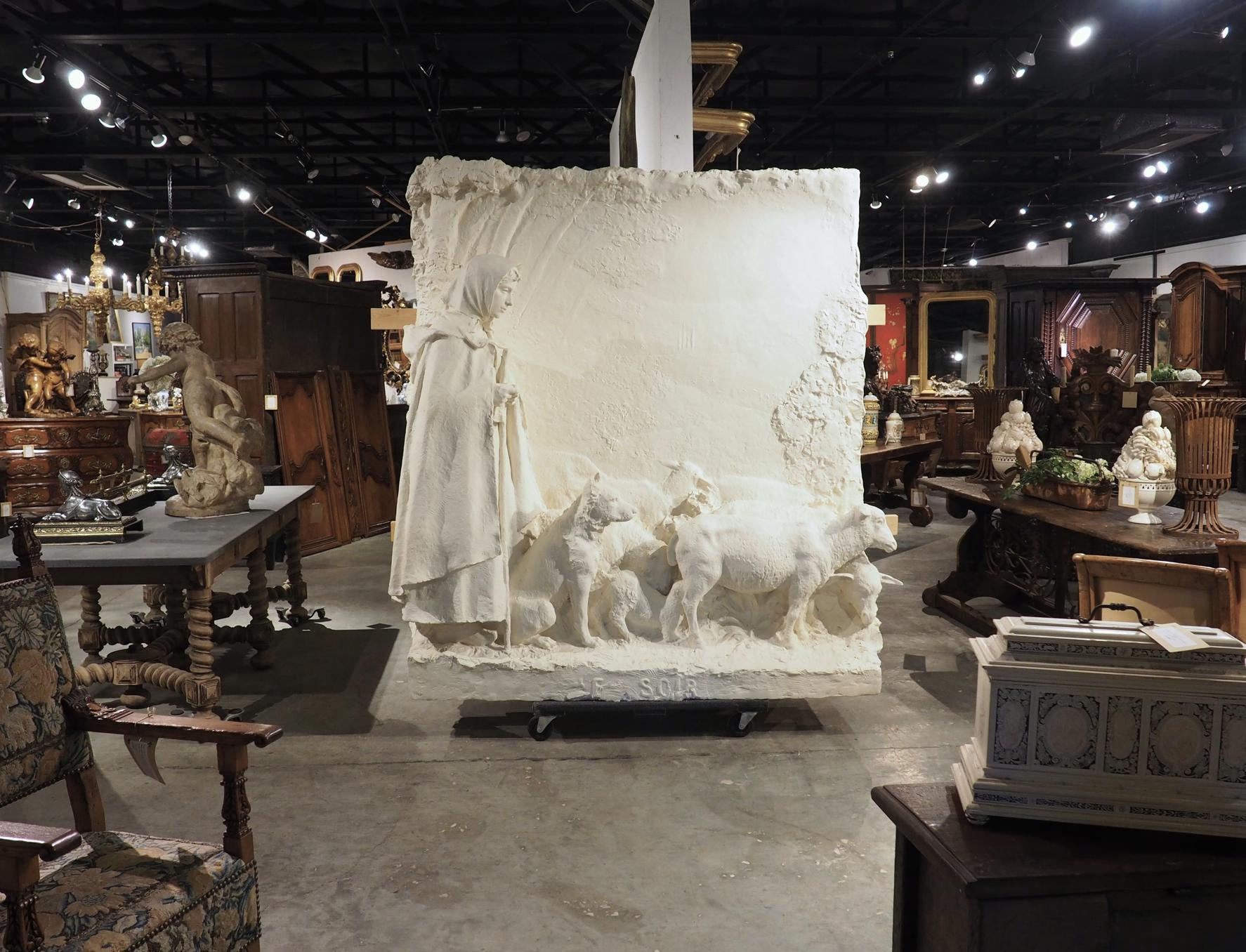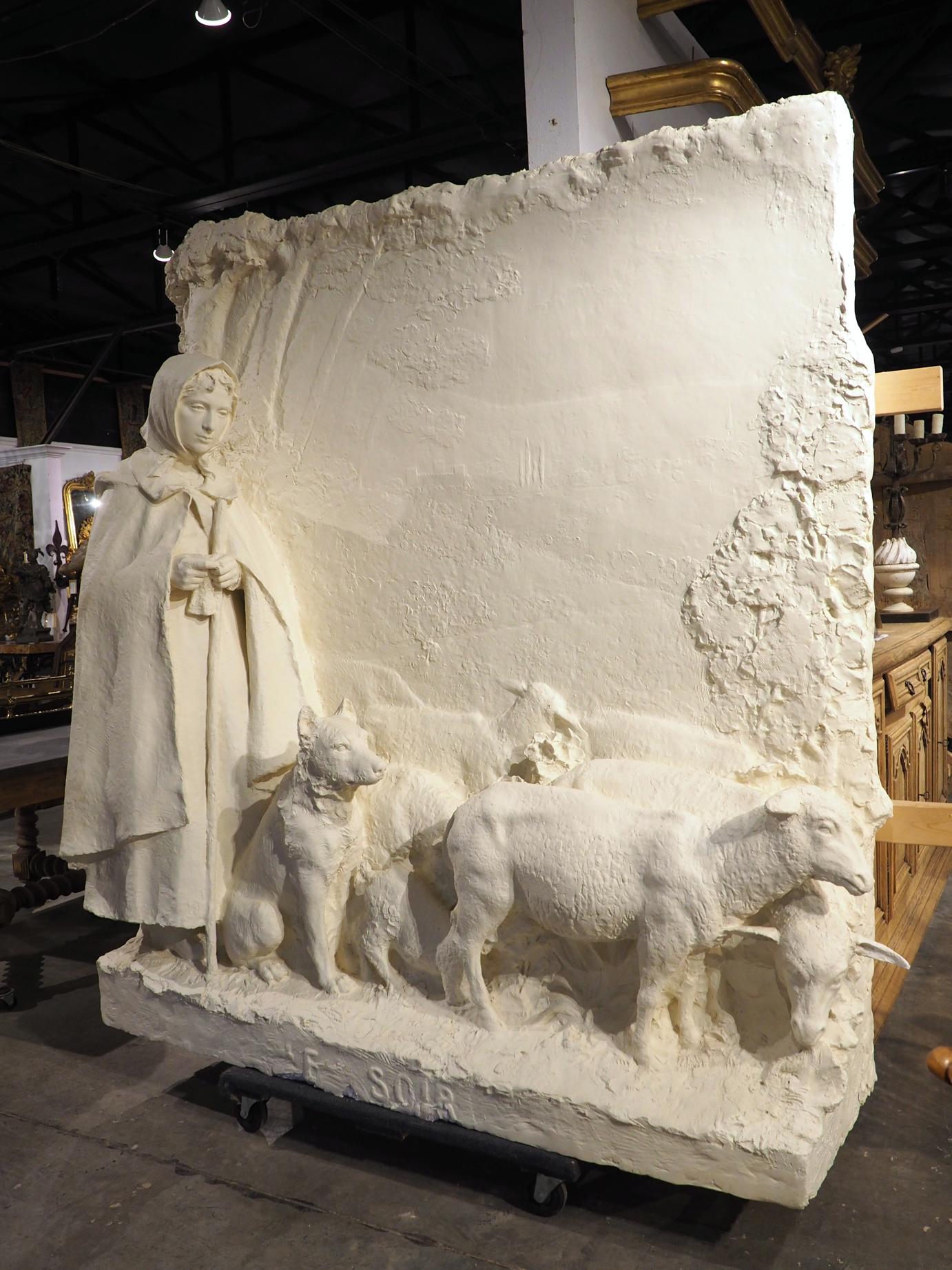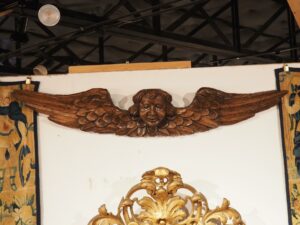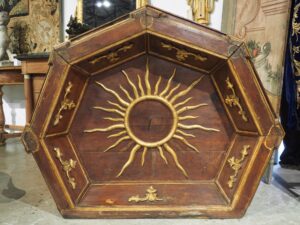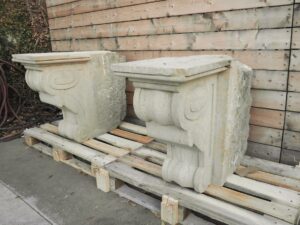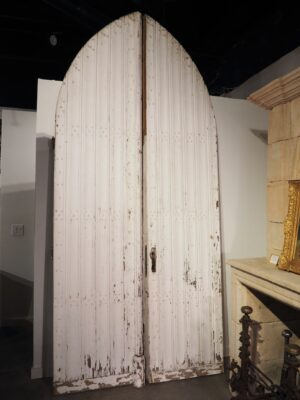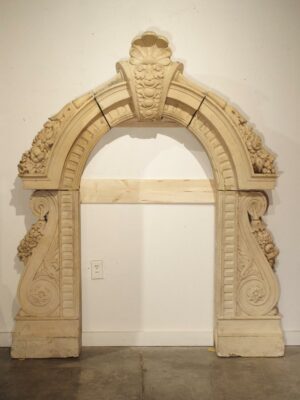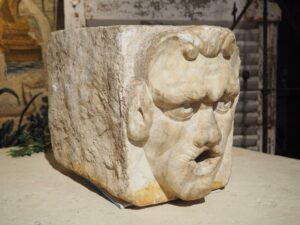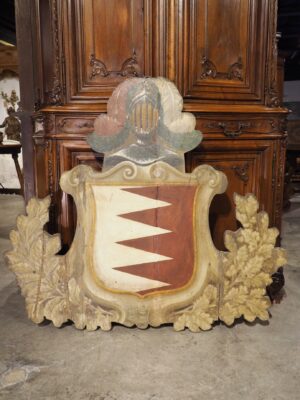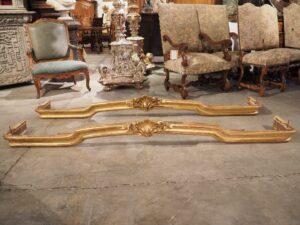Found in a chateau in Loriol du Comtat, in the Provence region of France, this large-scale plaster sculpture is signed and dated by the artist, making it a rare find. Originally part of a boiserie containing a fireplace, the sculpture decorated the main hall of the chateau. The artist, Marius Sain, created the piece for the owners of the chateau in 1914. The lovely depiction of a shepherdess and her flock is a fitting subject for an area of France in which shepherding is such an important part of the culture. The preserved heritage of transhumance in Provence goes back at least 800 years, as evidenced by collections of ancient songs, stories, and art.
Life-size in scale, the lovely sculpture features a mix of high-, mid-, and low-relief embellishments. A hooded shepherdess tends to her flock of sheep with a crook in hand. A dog sits calmly at her feet as the flock gathers in front of them. Both the shepherdess and the dog are in high relief, as is the lead sheep. The lamb seen suckling from the front sheep was crafted in mid relief, as is the visible head on the far right of the sculpture. There are a few sheep behind them in low relief. Large trees can be seen on either side of the group, while off in the background (faintly visible) are a castle with four fastigiate Mediterranean cypress trees (known as Stricta) and a spired church. The attention to detail is magnificent, with textured surfaces including the animals’ fur and the uneven ground.
Block print on the plaster can be seen at the base. The letters read Le Soir, which is French for “The Night”. The right side of the sculpture has been signed “M Sain 1914”.
Marius Joseph Sain was born in 1877 in Avignon, France. In 1902, Sain moved to Paris to study at the Ecole des Beaux-Arts. Through introductions by his older brother and painter, Paul, Sain was able to immerse himself in a collective of artists known as Salon de la Société coloniale des artistes français (“Salon of the Colonial Society of French Artists”) that traveled abroad to create commissioned pieces. By 1914, Sain had returned to France, gaining an appreciation for water carriers and shepherds, which would become prevalent in his later works.
CONDITION: Good antique condition, with wear commensurate to age, including old fills and repairs. Minor losses and fleabites, with light rubs and separations. The plaster has been professionally restored and cleaned. Light chips to the LE SOIR letters (see detail photo). A previous owner added wood supports to the back to make the plaster easier to move. The supports can be removed during the final installation.


